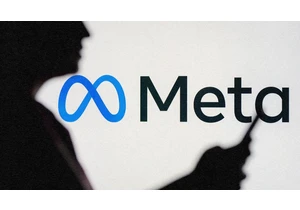Last week, during a virtual “Inside the Lab” presentation for tech reporters, Meta CEO Mark Zuckerberg and other executives showed off a bevy of prototype virtual-reality headsets developed by the company’s Reality Labs Research group.
This experimental hardware included several versions of the company’s “Half Dome” headsets, which use varifocal lenses to keep items in focus wherever they sit in your virtual view. Then there was the “Butterscotch” headset, with a high-res display so crisp you can read the bottom line of a virtual eye chart. And “Starburst,” which makes VR feel more real by packing 20,000 nits of display brightness compared to the Quest 2 headset’s 100 nits. And “Holocake 2,” whose thin holographic lenses make for a much slimmer headset than designs currently on the market.
In every case, it was clear that the headset in question wouldn’t reach consumers in anything like its current form. For instance, the Half Dome’s varifocal displays rely on eye-tracking technology that isn’t yet reliable enough for commercial deployment. The Butterscotch unit ramps up display resolution by cutting the field of view in half, resulting in an unnaturally narrow image. Starburst is too gargantuan a piece of equipment to wear strapped to your head; instead, you hold it up to your eyes using handles. And Holocake 2 needs to be hooked up to a PC rather than offering a stand-alone VR experience.

It’s rare for a big tech company to share as much about work in progress as Meta is doing.
Still, whatever Meta’s motivations—and no matter how long it takes to ship any products—it’s rare for a big tech company to share as much about work in progress as it’s doing. Apple, as is its wont, is developing its mixed-reality headset in secrecy; last month, Bloomberg’s Mark Gurman reported that it’s far enough along to have been demonstrated at a meeting of the company’s board. Google, meanwhile, recently showed real-time translation via AR glasses, teasing its product under development in a limited way.

But it would be a mistake to get prematurely enthusiastic over anything Zuckerberg and company have been disclosing. For one thing, we have to rely on Meta’s own assessments of its prototypes—the company conducted its “Inside the Lab” presentation via Zoom webinar, so it was impossible for those of us who attended to gauge the quality of the tech being previewed. And we only know what Meta is choosing to tell us: Though presenters pointed out some of the obstacles they haven’t yet overcome, even more went unaddressed, such as the impact all of this advanced technology has on headset battery life.

Someday, we’ll know how Zuckerberg’s decision to bet his company on the metaverse played out. That’s when the impact—or lack thereof—of its current prototypes will be clear. For now, it’s fine to enjoy the glimpse we’re getting without overthinking its long-term implications.
Accedi per aggiungere un commento
Altri post in questo gruppo

Every now and then, you run into a tool that truly wows you.
It’s rare—especially nowadays, when everyone and their cousin is coming out with overhyped AI-centric codswallop tha

Tesla released its quarterly earnings report on Tuesday, its first since the company’s chief executive, Elon Musk, took up residence in the Trump White House and immediately began trying to fire f

There’s never a dull day in the world of weight-loss medication. This week brought new restrictions on compounded GLP-1 medication, the cheaper, copycat versions of brand-name drugs that tel

In December 2023, I wrote an article exploring Apple CEO Tim Cook’s most likely successors, because t

“Meta profits, kids pay the price,” was the message delivered by dozens of grieving families at the doors of Meta’s Manhattan office on Thursday.
Forty-five families traveled from

The world’s auto industry is getting a shake-up from Chinese automakers that

There’s Blue Sky and then there’s Bluesky.
Blue Sky, a paper goods company
